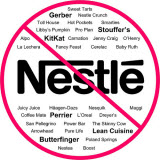Canadian Government Forced to Review Safety of 23 Pesticides
 Tuesday, February 11, 2014
Tuesday, February 11, 2014 
Environmental groups in Canada have forced the federal government to review 23 ingredients that are used in 383 different pesticide products approved for sale in Canada. These pesticides have been banned in European countries and the environmental groups (David Suzuki Foundation and Equiterre, represented by Ecojustice lawyers) won a legal challenge which will force the Canadian government to review their safety.
According to the Equiterre press release:
The harmful impacts of these pesticides are well-known. For example, Europe has banned Atrazine, one of the chemicals in the lawsuit, since 2004, but it is still approved in Canada for use on corn. Atrazine is a frequently detected herbicide widely contaminating Canadian surface water and groundwater, and poses health risks as an endocrine disruptor. The herbicides 2,4-D, Bromoxynil and Linuron, and the insecticides Carbaryl and Dichlorvos, are likewise approved for use in Canada, but have been banned by European countries because of serious health risks that include cancer.
The pesticides to be reviewed include those used in places such as:
- golf courses
- fruit, vegetable and grain crops
- Christmas trees
- stored apples
- pastures and barns
- wood
- sewers
- theatres
- warehouses
One of the most common chemicals that is being reviewed is 2,4-D, which is considered one of the most common herbicides. It is contained in more than 140 registered products in Canada to kill weeds on crops like wehat, corn and soy beans, on golf courses, and in domestic weed killers (e.g. WeedEx). It has been linked to cancer and is of particular concern because of its high mobility in soil, which can cause groundwater contamination.
Some parts of Canada have partial pesticide bans in place, but not all of them do and not all of them go as far as they should. Recent studies found that half of organic product in Canada has pesticide residue on it. Some of this could be due to drift from other fields, but some of it likely represents deliberate use of pesticides that are not allowed in organic farming.
Banning the use of pesticides for cosmetic purposes (i.e. having a pretty lawn) is a start, but the levels of pesticides in our food and our environment could still be of significant concern. I'm glad that the government is being forced to take another look at these chemicals and hope that they act, as they have with chemicals such as Bisphenol-A, to protect the health of Canadians.
On another note, the Canadian Government is consulting with parents and Canadians about the way nutritional information is presented on food labels. You can find out more about the consultation and submit your comments online.
Image credit: Wisconsin Department of Natural Resources on flickr
 Kids' Health,
Kids' Health,  Mom's Health and tagged with
Mom's Health and tagged with  environment,
environment,  food,
food,  health,
health,  pesticides
pesticides 



















Reader Comments (1)
I'm really glad that they are taking a look at the environmental concerns around these chemicals - especially since they are banned or more restricted in use in other countries.
At the same time, I'm worried that the CRA is now investigating many of the non-profits involved for alleged using of funds to promote partisan political messages, when they are, in fact, promoting the current science around these issues.